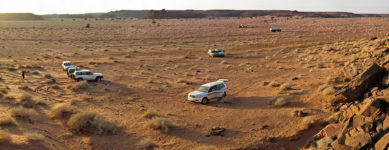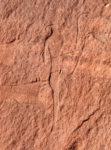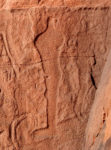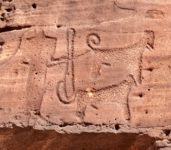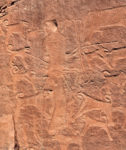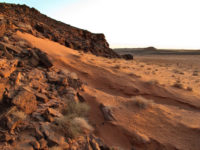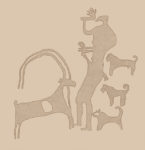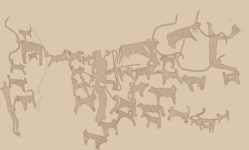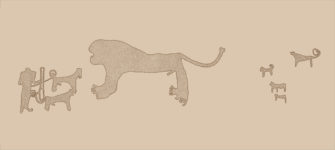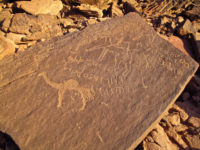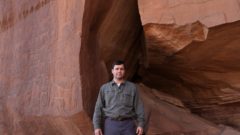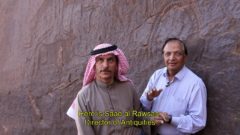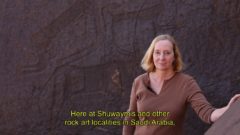 Shuwaymis is an area about 370 km southwest of the city of Ha’il, near the town of al-Ha’it, in southern Ha’il province. The petroglyphs were known by local Bedouin for centuries, but only drawn to the attention of authorities by a local school headmaster, Mamdouh al Rasheedi, in 2001. Professor Saad Abdul Aziz al-Rashid, calls Shuwaymis “a unique and very important find.”
Shuwaymis is an area about 370 km southwest of the city of Ha’il, near the town of al-Ha’it, in southern Ha’il province. The petroglyphs were known by local Bedouin for centuries, but only drawn to the attention of authorities by a local school headmaster, Mamdouh al Rasheedi, in 2001. Professor Saad Abdul Aziz al-Rashid, calls Shuwaymis “a unique and very important find.”
The setting differs significantly from Jubbah in being surrounded by striking lava flows that impede travel, especially by camels and horses. Wadis are therefore important avenues for herders, and it is in these valleys that Neolithic and later petroglyphs appear. One of the wadis contains Neolithic hunting scenes just as remarkable as those in the Jubbah area. An enormous panel of camels, dating to a later period, is to be found on the east side of the wadi.
Many species of game and carnivores are shown at Shuwaymis. There are Neolithic hunting scenes with men carrying bows and arrows, accompanied by packs of dogs, overwritten with images of domestic cattle. One panel has so many men that it may indicate an organized communal hunt, something quite rare in Arabian rock art. Nearby are deeply incised footprints that are at least Neolithic in age. Another scene shows a wild ass and her foal being hunted by a man and his dogs. Depictions of leopards and cheetahs are more common here than elsewhere in Arabia, and there is an impressive 2-meter image of a lion.
